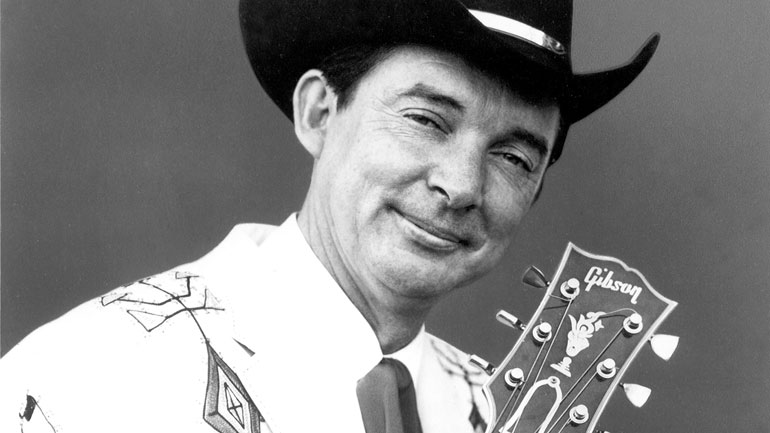Ray Price, 1926 – 2013
Farewell to the country master whose barfly narratives linked the honky-tonk, countrypolitan and outlaw eras.

“Hi neighbours. It’s sundown at our house as we make this new Columbia album for you. So sit back, kick off your shoes and relax… just a little bit”. So began Ray Price’s 1963 Columbia LP Night Life – a landmark country album that marked the stylistic shift from the lonesome ’50s country-blues of Price’s one-time roommate Hank Williams to the string-heavy Nashville Sound of the ’60s. Price, who passed away yesterday after six painful months spent battling pancreatic cancer, was integral to that string-drenched revolution.
Born poor in the small East Texas town of Peach in 1926, on January 12, 1926, Price was raised on the Western swing sound of Bob Wills & His Texas Playboys. He joined the Marines at 17 and began singing in 1949 for the KRBC radio station in Abilene, Texas. He signed with Columbia in 1951, the same year he met Hank Williams at a Nashville radio station. The two became friends. Williams wrote Weary Blues (From Waiting) for Price, and got him onto the Grand Ole Opry. The two roomed together and, following Williams’ death, Price managed his band before forming his own outfit, the Cherokee Cowboys, in 1953. The Cowboys would include such future country names as Roger Miller, Johnny Paycheck and Willie Nelson.
Price’s unique brand of honky tonk country, with a walking bassline and a 4/4 rhythm, became known as the “Ray Price shuffle”, and came to define the drum-led sound of late-’50s country.
However, it with on the long-playing album that Price truly came to transform country music. Albums like 1957’s Sings Heart Songs and 1958’s Talk To Your Heart were country music’s first concept albums and, with the help of Cherokee Cowboy Willie Nelson, Price also created one of the greatest.
It was Nelson who gave Price the sumptuously swinging title track for the Night Life album, a song that, with Buddy Emmons’ mesmerizing pedal steel, and Price’s own spoken-word intro, effortlessly establishes the album’s twilight mood of lonesome souls, broken-hearted lovers, and that sore-headed, early morning yearning for redemption.
Price had a great deal of affection for these tenants of his after-hours world – people who came to “bury a broken dream and watch an old love die”. If anything, his ’60s concept albums were even stronger, more rooted in this world. 1964’s Burning Memories took some beating, with a title that conjures up the twin worlds of romantic pain and self-destructive pity that imprison the archetypal country barfly. Here was a walk through the grey haunted rooms of country heartbreak, a spectral, smoke-woven world of longing and loathing that Price embroidered with massed strings, harmony vocals and a baritone pop crooning style that had come to resemble Mario Lanza doing Porter Wagoner. In the ’60s and into the ’70s, Ray Price walked a beer and sawdust kingdom where sadness lurked as an ever-present entity, but in Don Law and Frank Jones' vast haunted-dancehall production, Buddy Emmons’ steel guitar and Floyd Cramer’s piano a strange kind of comfort could be found, a grandeur conferred on these chill, memory-stained rooms.
Price’s new sound eventually became the vilified template for ’70s pop country, the kind of production that the Outlaw Movement – and Willie Nelson himself – would rebel against; but listened to now, especially in the wake of Ray Price's death it sounds astonishing. Swirling, drunken, eerie and poetic: it’s the sound of hard booze and heavy heartbreak lifting a mind high up into the black, black clouds. So long Ray.
PHOTO: Getty Images

